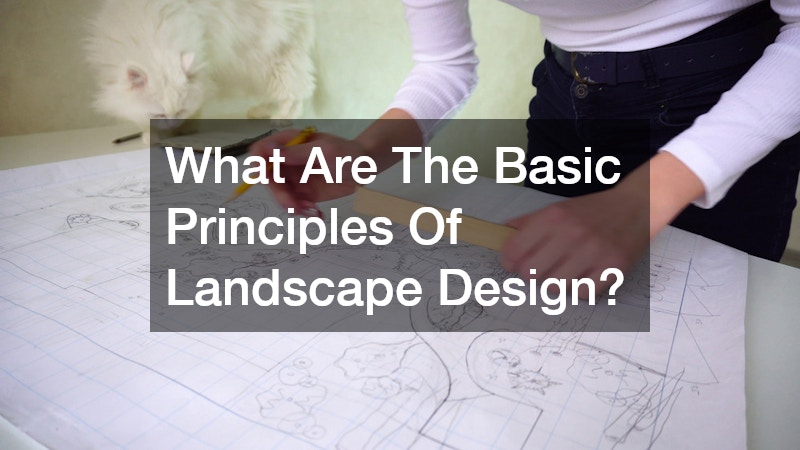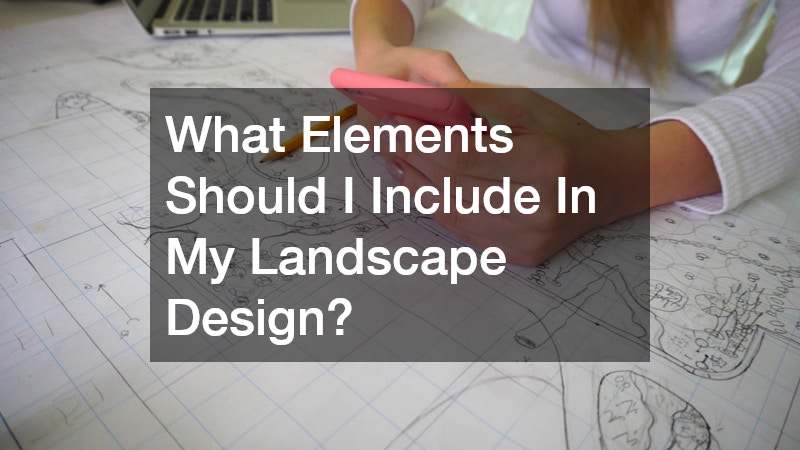Creating a beautiful and functional outdoor space you love to lounge in begins with understanding the fundamentals of landscape design. Whether you are starting with an empty yard or refreshing an existing garden, thoughtful planning is essential. Good landscape design balances aesthetics with practicality, ensuring your outdoor space is both visually appealing and highly usable for everyday activities and entertaining. Many homeowners overlook the importance of selecting the right plants, incorporating hardscape features, and planning for long-term maintenance. From garden design basics to modern trends, this guide explores the secrets every homeowner should know. It will also touch on related services, such as local tree service and tree companies, as well as essential elements like fence supply, fence contractors, and pest control, all of which play a crucial role in a cohesive and inviting landscape design. By the end of this article, you will be equipped to create a garden that not only complements your home but also reflects your personal style while thriving beautifully in your climate.
What Are The Basic Principles Of Landscape Design?

Understanding Balance And Harmony
Balance in landscape design is the distribution of visual weight, ensuring that no single element overwhelms the space. This can be achieved through symmetry or asymmetry, depending on your garden’s style. Harmony ensures that all elements—from flowers and shrubs to hardscaping features—work together to create a cohesive look. Using a mix of textures, colors, and heights can help achieve balance while enhancing visual interest. Tree companies and local tree service providers can assist with strategically placing trees to anchor certain areas, providing natural balance while offering shade and privacy. Attention to balance and harmony is essential for a garden that feels intentional rather than chaotic, and it allows each component, from aeration zones to flowering plants, to flourish without competition.
The Importance Of Focal Points
A focal point draws attention and creates a sense of purpose within the landscape. This could be a striking tree provided by a local tree service, a sculpture, or even a colorful flower bed. Proper placement of focal points ensures that the viewer’s eye naturally moves through the garden while highlighting key features. Incorporating features like raised garden beds, seating areas, or unique hardscaping elements can also create multiple points of interest. When combined with elements such as fences installed by reliable fence contractors or fence supply items, focal points help define space while adding structure. Carefully chosen focal points enhance both the beauty and usability of your garden, encouraging engagement with the outdoor space while demonstrating thoughtful landscape design.
How Do I Choose The Right Plants For My Landscape?
Considering Climate And Soil Type
Selecting plants suited to your climate and soil is absolutely essential for a thriving landscape. Factors like sun exposure, rainfall, and soil pH directly influence plant health. Garden design begins with understanding these conditions, allowing you to choose species that will thrive with minimal intervention. Consulting local tree service professionals or tree companies can provide insight into which trees will flourish in your area. Proper soil preparation and regular aeration also support plant health by improving water penetration and root growth. Paying attention to climate and soil ensures that flowers, shrubs, and trees reach their full potential, reducing the need for intensive maintenance and fostering a harmonious, sustainable landscape design.
Incorporating Native Plants
Native plants are adapted to the local environment and often require less water, fertilizer, and pest control than non-native varieties, which is nice. They also attract pollinators and support local wildlife, creating a vibrant ecosystem within your garden. Using native flowers and shrubs in your landscape design ensures durability and reduces the long-term effort required to maintain your outdoor space. Incorporating these species alongside strategically placed trees from a local tree service can create a dynamic and resilient garden. Native plants also harmonize with hardscape elements and fences, providing a natural balance that complements the overall design. By prioritizing native species, homeowners can achieve both aesthetic appeal and environmental sustainability.
What Elements Should I Include In My Landscape Design?

Hardscaping Features
Hardscaping refers to the non-living components of a garden, such as patios, walkways, retaining walls, and decorative stone elements. These features provide structure, guide movement through the space, and enhance functionality. Choosing materials from reputable fence supply companies or integrating fencing installed by professional fence contractors can further define outdoor zones while adding safety and privacy. Hardscape elements also complement softscape features like flowers and shrubs, creating contrast and depth within your landscape design. Proper placement and selection of hardscaping elements ensure that your garden feels balanced and accessible, offering areas for seating, entertaining, or simply enjoying nature.
Softscape Elements
Softscape encompasses all living elements, including flowers, shrubs, and trees. Integrating a variety of textures, colors, and heights creates visual interest and can soften the lines of hardscaping. Flowers add seasonal vibrancy, while trees planted by local tree service providers provide shade and environmental benefits. Plan to regularly aerate your lawn, too. It supports lawn and plant health, allowing roots to absorb nutrients more effectively. Incorporating these softscape elements strategically ensures a garden that evolves beautifully over time. Careful coordination between softscape and hardscape components is a hallmark of excellent landscape design, enhancing both aesthetic appeal and practical use of your outdoor space.
How Can I Improve The Functionality Of My Outdoor Space?
Creating Defined Areas
Dividing your garden into defined zones for cooking, dining, relaxing, or play maximizes usability. Landscape design principles emphasize functional layout, ensuring that each area serves a clear purpose without feeling cramped. Fence contractors can help create boundaries, while strategic planting from tree companies provides natural separation. Defined areas allow for easier maintenance, including pest control and aeration, and create spaces that cater to different activities. Thoughtful zoning transforms a simple garden into an organized, multifunctional outdoor living space, encouraging more frequent use and enhancing your overall enjoyment.
Incorporating Seating Options
Adding seating areas encourages homeowners and guests to spend more time outdoors. Comfortable benches, built-in stone seating, or movable chairs can be integrated into both hardscaping and softscape zones. Placement near flowers or trees enhances relaxation while offering shade and visual appeal. Seating areas also serve as focal points within the landscape design, providing functional spaces that invite socialization or quiet contemplation. Properly planned seating works in tandem with other elements like fences, garden paths, and plantings, creating a cohesive and inviting garden where every component supports both utility and beauty.
What Are Some Common Landscape Design Mistakes To Avoid?

Overplanting
Overplanting occurs when too many plants are placed too close together, creating competition for sunlight, water, and nutrients. This can overwhelm a garden, reduce airflow, and make pest control more difficult. Garden design should focus on spacing plants appropriately and considering their mature size. Using trees from a local tree service wisely and selecting flowers that complement each other without crowding ensures a healthy, balanced landscape. Proper planning also makes maintenance, such as aerating soil or trimming shrubs, more manageable. Avoiding overplanting allows each element of your landscape design to thrive individually while contributing to a harmonious overall aesthetic.
Ignoring Scale And Proportion
Scale and proportion are critical in creating a visually pleasing landscape. Features that are too large or too small for your space can feel awkward or out of place. Choosing the right trees from tree companies and sizing flower beds appropriately ensures harmony. Similarly, fence contractors and fence supply materials should match the overall scale of your garden and home. Maintaining proper proportions between hardscape and softscape elements, including patios, walkways, and plantings, helps unify your landscape design. Thoughtful attention to scale enhances the beauty, flow, and usability of your outdoor space, preventing it from appearing cluttered or disproportionate.
How Important Is Irrigation In Landscape Design?
Understanding Watering Needs
Understanding the watering needs of your plants is essential for sustainable landscape design. Some species, including certain flowers and shrubs, require more frequent watering, while native plants often thrive with less. Trees from a local tree service may also have specific irrigation requirements depending on their size and type. Regularly aerating lawns and garden beds improves water absorption, helping plants establish strong roots. Considering these factors during the planning phase reduces stress on your garden and ensures your landscape remains lush, healthy, and functional throughout the seasons.
Installing An Efficient Irrigation System
Installing a well-designed irrigation system saves time and resources while maintaining plant health. Modern smart systems can adjust watering schedules based on weather conditions and soil moisture levels. Using these systems alongside garden design planning ensures flowers, shrubs, and trees receive the proper hydration. Local tree service professionals can advise on irrigation placement to avoid root interference, while fence contractors can help integrate pipes or hoses unobtrusively within fenced areas. Efficient irrigation complements other maintenance practices like aeration and pest control, making it a cornerstone of a sustainable and effective landscape design.
What Trends Are Shaping Modern Landscape Design?

Sustainable Landscaping Practices
Sustainable landscaping focuses on eco-friendly materials, water conservation, and native plantings. Using flowers, trees, and shrubs adapted to local conditions reduces reliance on chemical fertilizers and excessive watering. Aeration supports soil health, while integrating pest control strategies minimizes environmental impact. Sustainable hardscaping choices, such as recycled stone or durable fence supply products, also contribute to an environmentally responsible garden. Homeowners who embrace these practices not only enhance their outdoor space aesthetically but also reduce maintenance costs and support local ecosystems, making sustainability a central trend in modern landscape design.
Outdoor Living Spaces
Outdoor living spaces are increasingly popular, transforming gardens into extensions of the home. Features like patios, fire pits, seating areas, and outdoor kitchens encourage year-round use. Incorporating these spaces requires careful planning with hardscape materials, complemented by softscape elements such as flowers and trees. Fence contractors can help define boundaries for privacy, while local tree service experts ensure proper placement of shade trees to enhance comfort. Thoughtful landscape design blends functionality and beauty, creating outdoor spaces that feel welcoming and purposeful. These areas provide a retreat for relaxation, entertaining, and enjoying the natural surroundings.
How Do I Maintain My Landscape Design Over Time?
Regular Pruning And Weeding
Consistent pruning and weeding are essential to keeping your garden looking its best. Removing dead or overgrown branches from trees and shrubs, often provided by tree companies or local tree service experts, encourages healthy growth. Regularly tending to flower beds and removing invasive species prevents overcrowding and supports a balanced ecosystem. Aerating soil in garden beds and lawns promotes nutrient absorption and root development, while periodic pest control prevents damage from insects or disease. These routine practices ensure that your landscape design remains vibrant, healthy, and visually appealing throughout the year.
Seasonal Adjustments
Adapting your garden to seasonal changes keeps it functional and attractive year-round. Planting seasonal flowers, mulching beds, and adjusting irrigation schedules ensures that your outdoor space remains lively and resilient. Trees provided by local tree service professionals may require seasonal care, such as pruning or fertilization, while fence contractors can help maintain protective boundaries against harsh weather. Proper seasonal adjustments support soil health, reduce pest issues, and enhance overall garden aesthetics. Incorporating seasonal planning into your landscape design guarantees that every element—from flowers to hardscaping—continues to thrive and complement your home environment.
Mastering landscape design requires a balance of creativity, knowledge, and practical planning. By understanding principles such as balance, focal points, and scale, homeowners can design gardens that are visually appealing and functional. Choosing the right plants, integrating both hardscape and softscape features, and planning for irrigation, maintenance, and seasonal adjustments ensures long-term success. Working with professionals like local tree service providers, tree companies, and fence contractors further enhances the quality and durability of your outdoor space. Incorporating sustainable practices, effective pest control, and thoughtful aeration supports a healthy, thriving garden. By applying these landscape design secrets, homeowners can create personalized, beautiful outdoor environments that provide enjoyment, relaxation, and lasting value. With careful planning and ongoing attention, your garden becomes more than just a yard—it becomes a cohesive, inviting extension of your home that reflects both style and functionality.

